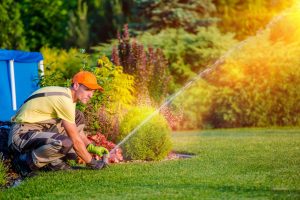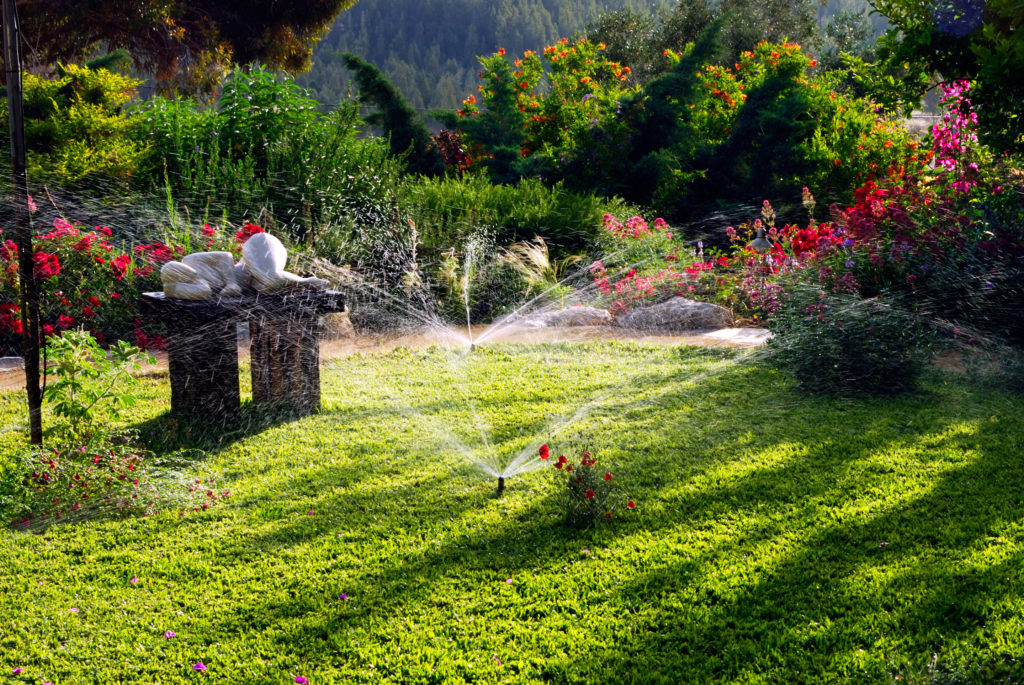Updated on April 27, 2020
Sprinkler Repair & Maintenance
So, it’s been a couple of years since your sprinkler system has been installed? Then you know your sprinkler system requires love and care to keep performing optimally. Once you have a Sprinkler Repair from a local sprinkler company like Tyler Sprinkler, you need to keep it running properly. This is to be sure it keeps saving your money on your water bills as well as preserving this finite resource.

To get a return on your investment, you need a summer maintenance plan to keep your water sprinkler going at its best. We have ten strategies for maintaining your sprinkler system that will help avoid costly sprinkler repairs. Since your lawn sprinkler system is running during the spring, summer and fall months, it makes sense that you use good maintenance strategies to keep it running when you need it most.
Ten Sprinkler System Methods for Managing Your Irrigation System
1. Know how long it takes for your sprinkler to spray each inch of turfgrass: for optimum health, your lawn and garden require one inch of water per week. Typically, an efficient sprinkler system is expected to deliver 1 “of water in 15 minutes.
To measure how much water the sprinkler provides in 15 minutes, place the tuna cans in separate watering areas. Switch the sprinkler system on for 15 minutes. After 15 minutes, take a ruler and check how much water there is in the cans of the field. If it only indicates a quarter of an inch, you may need to readjust the device, check for a leak, or unclog the sprinkler head.
2. Change your watering routine depending on the season: in spring, the lawn and garden do not need the same amount of water as in mid-July. As temperatures drop, you need to change the machine to produce less water or increase the output frequency.
In fact, different parts of your land have different irrigation uses. For starters, your lawn, which faces north and is in the shade, has half the watering needs as that of your yard, which is in full sun all day long. Adapt the zones to satisfy the watering needs of each region.
3. Regularly check the whole irrigation system for leakage, broken lines or misdirected sprinkler heads: spills, broken lines and misdirected sprinkler heads for wastewater and dollars. When one section of your lawn has puddles and another area is completely dry, it could mean that there is a leak or a misdirected sprinkler eye. Investigate to pin the problem and fix it.
4. Mount a rain or rain / freeze sensor to save more energy: when it starts to rain or when the air temperature decreases to 32 ° F, a rain or rain / freeze sensor can immediately shut down the irrigation system to avoid wasting water.
5. Repair or replace damaged and clogged sprinkler heads: a monthly check of your sprinkler system helps you to find and replace damaged sprinkler heads.

6. Clear obstructed or obscured lawn sprinklers: If your sprinklers head blasts water directly to an obstacle, such as a vehicle or a flower, then reset the heads to places that you want to spray.
7. Check for sprinkler run-off: if one place is having too much water or if your sprinkler is flooding your driveway, you want to change the sprinkler heads. Sprinkler run-off not only loses water, but also adds contaminants to storm drains.
8. Fix the sprinkler so that there is no high-pressure misting: when the lawn sprinkler has high-pressure misting, the water turns into tiny droplets and gets carried by the breeze or forms a layer of mist on the spot where it is meant to be spraying. You will fix this problem by using a pressure system to regulate the water pressure.
9. If you have sandy soils or if your sprinkler is placed on a hill, then adjust the sprinkler timer to loop and soak: it takes longer for water to percolate down into the soil when the sprinkler is on the slope or when you have heavy clay soil. To remedy this problem, set your system to go off in 7-minute intervals to determine if this is the right amount of time before the water starts to run out. You can adjust the time based on how long it takes to start the run-off.
After that, you should set your sprinkler timer to go off every seven or so minutes to allow the water to soak deep into the soil. At seven minutes, the lawn sprinkler will shut off for seven minutes, and then again for another loop.
10. Hire a contractor to test your system once or twice during the summer: a contractor who is qualified to inspect irrigation systems will review the system once or two times during the summer to ensure that everything is in working order.
